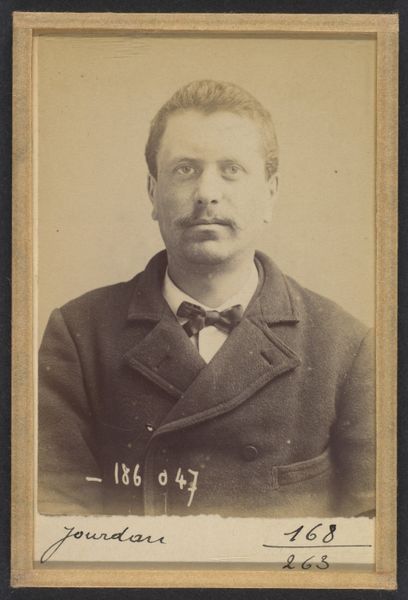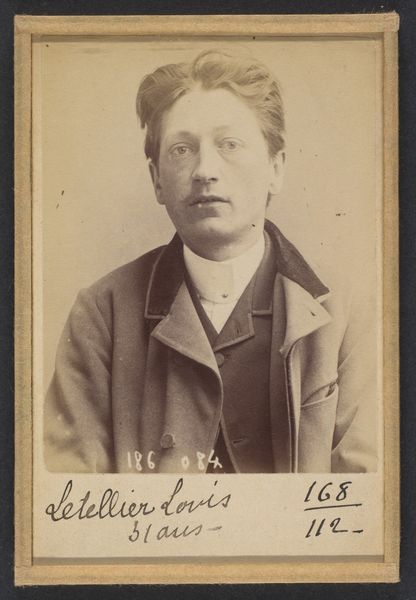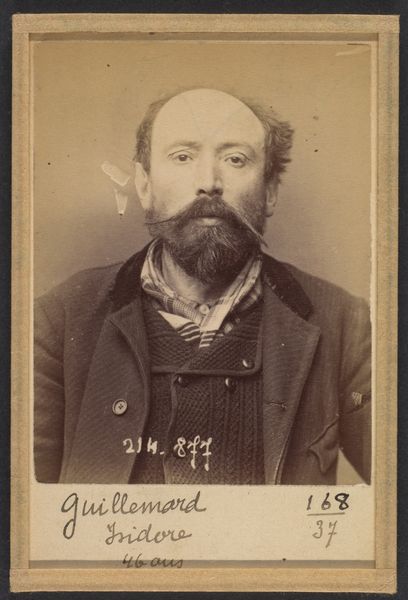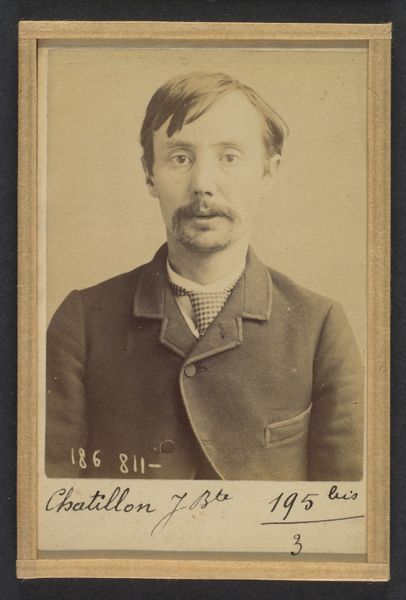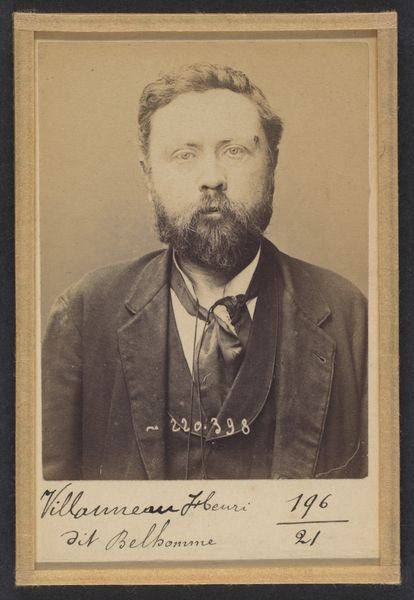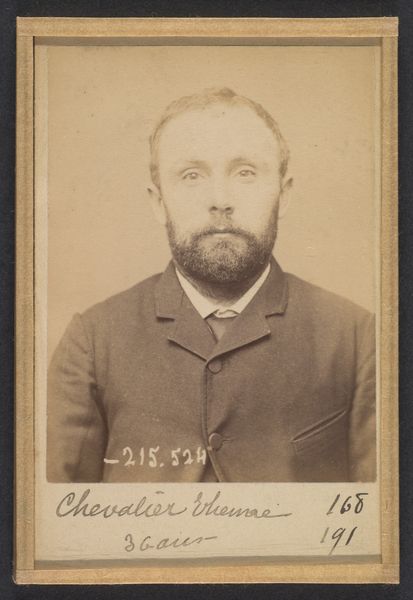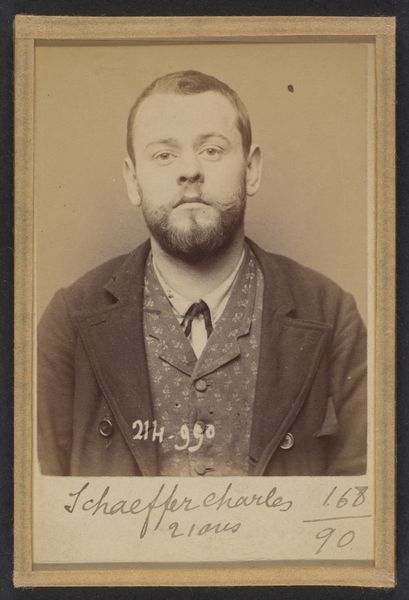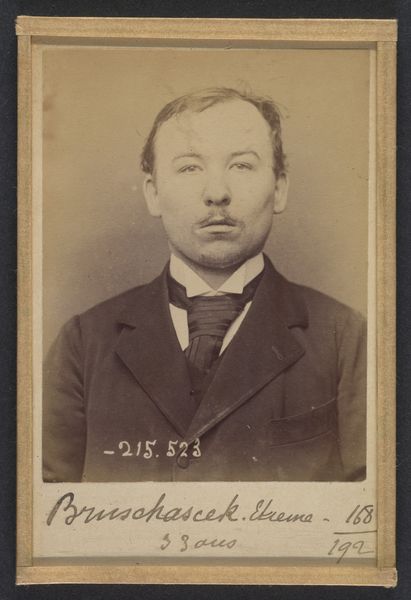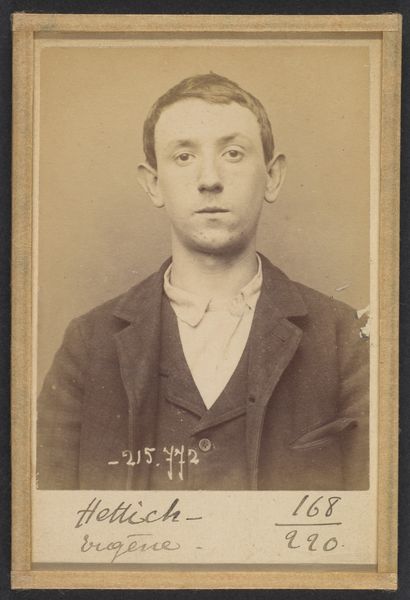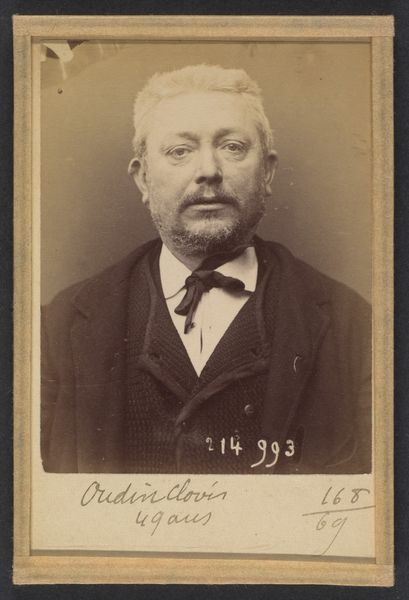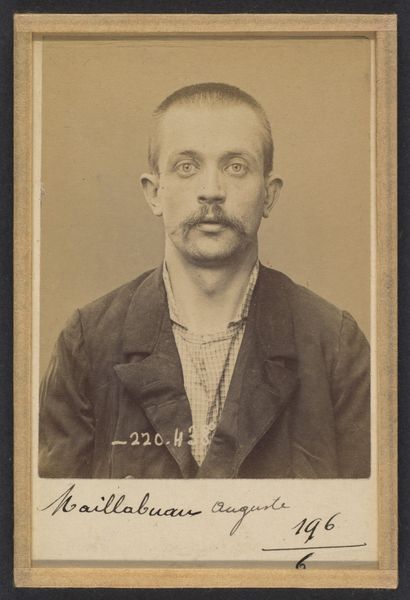
Hébert. Georges, Henri. 27 (ou 29) ans, né à Bayeux (Calvados). Menuisier. Anarchiste. 23/4/92. 1892
0:00
0:00
daguerreotype, photography
#
portrait
#
portrait
#
daguerreotype
#
photography
#
academic-art
#
realism
Dimensions: 10.5 x 7 x 0.5 cm (4 1/8 x 2 3/4 x 3/16 in.) each
Copyright: Public Domain
Editor: Here we have Alphonse Bertillon's "Hébert. Georges, Henri. 27 (ou 29) ans, né à Bayeux (Calvados). Menuisier. Anarchiste. 23/4/92," a daguerreotype from 1892, currently held at the Metropolitan Museum. It's a fascinating, almost haunting portrait. How do you read this photograph, considering its time and creation process? Curator: From a materialist perspective, it’s crucial to consider the daguerreotype itself. This process, demanding precision and expensive materials, was typically reserved for specific purposes. Here, it's being used to document a man labelled an anarchist—a deliberate application of photographic technology by the state for purposes of surveillance and control. Editor: So, the medium is not neutral, but carries a social and political weight. Curator: Exactly. The very act of photographing Hébert, labeling him an "anarchist" and "menuisier"– a joiner or carpenter, emphasizes his class and perceived threat to the established order. Think about the labor involved in producing this image: the photographer, the subject forced to pose. Who benefits from this visual record, and what does it produce? Editor: It feels almost dehumanizing, turning a person into data. But he’s also wearing nice clothes. What can you say about that choice of his attire? Curator: Consider the tension between his presentation and the state's intent. Is he trying to assert some respectability in the face of being documented as a criminal? Or is the photographic technology rendering visible social stratifications and how this man, working class, but dressing smartly nonetheless, posed a threat? What can we say about dress making, production of textiles? How might this portrait speak to a larger issue about modes of production? Editor: That shifts my perception of the image entirely. I was focusing on the individual, but it is actually embedded in so much more, such as social conditions of labor and production. Curator: Indeed. Looking at the material reality of the photograph allows us to unpack power dynamics and the intended social function of the portrait beyond just representing an individual. Editor: That makes the portrait much more charged than I initially realized! Thanks for this perspective!
Comments
No comments
Be the first to comment and join the conversation on the ultimate creative platform.
